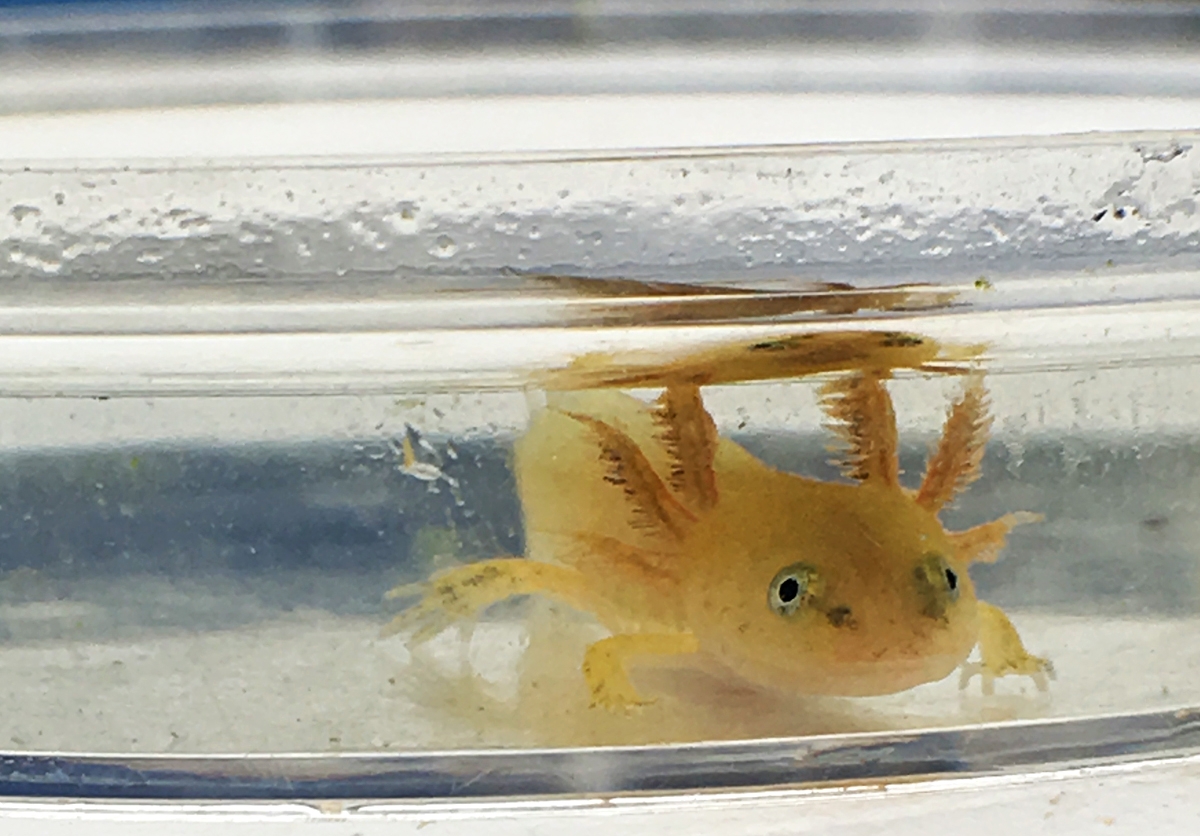Spotted Salamander Symbiosis: Content Primer
Student and Project-based Learning
Starting in 2014, Carroll County Public Schools (CCPS) in Maryland integrated this unique symbiotic relationship into their Science Research course as another means of exposing students to hands-on research focused on a local species. The initial work started with night treks (led by Maryland Sea Grant educator J. Adam Frederick) to observe the annual spotted migration in the Frederick Municipal Forest, Frederick County, MD. The sights and sounds of those treks served as a highly motivating factor for the educators as they were up close and personal with hundreds of spotted salamanders coming to local vernal pools. Following these night treks, teacher professional development meetings were held to stimulate thoughts about the focus of classroom-based activities related to the uniqueness of the spotted salamander life cycle.
That same year, Maryland Department of Natural Resources (MD-DNR) granted permission for teachers and students to collect spotted salamander egg cases from the wild. Students and teachers set up simple holding tanks. They studied the chemical composition of water used to house aquatic amphibians using information from the Ambystoma.org website, leading to a better understanding of the water quality and needs of the spotted salamander in the larval phase.
Students and teachers designed simple experiments to observe differences in salamander development related to the amount of light exposure provided for the egg cases in the aquariums. Once eggs began to hatch, they gathered data on the number that hatched and their length to make comparisons to the different light exposures. Student-driven projects like these are the hallmark of CCPS's Science Research courses led by Science Supervisor Jim Peters.



These projects expose students to the ideas behind the process of science and the multiple disciplines, skills, and collaboration required.
In 2015, CCPS students and teachers took their project to another level by hosting a “family science night” at a local elementary school so young students could see their work and get excited about science, reading, and writing. High school students worked side-by-side with elementary students to teach them microscopy skills, measuring techniques, and the similarities and differences of different animal larvae.
In partnership with Jennifer Keats Curtis and J. Adam Frederick, students were able to experience some of the sights and sounds of recent night treks to the vernal pools through video and images taken by Frederick. Curtis read to the students from the newly published book Salamander Season (Arbordale Press, 2015), co-authored with Frederick, to simulate ideas about the salamander life cycle and the importance of caring for our environment. Overall, the outreach project was a great success. Teachers from the high school and elementary school benefited from seeing a vertically integrated activity as an excellent learning experience for all students.
